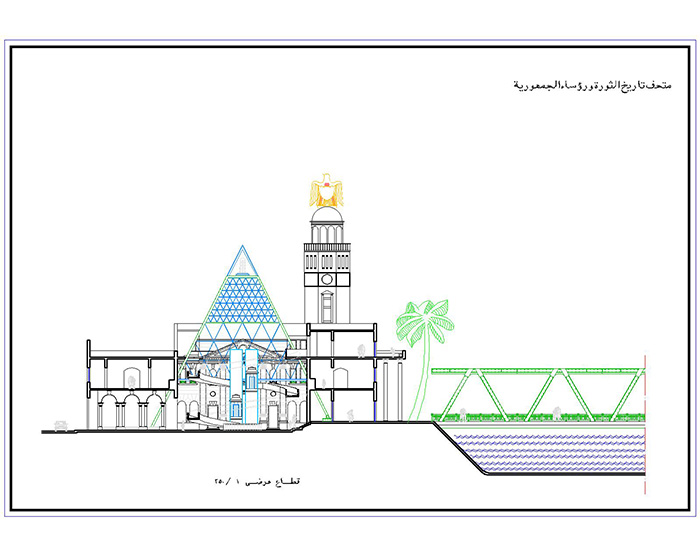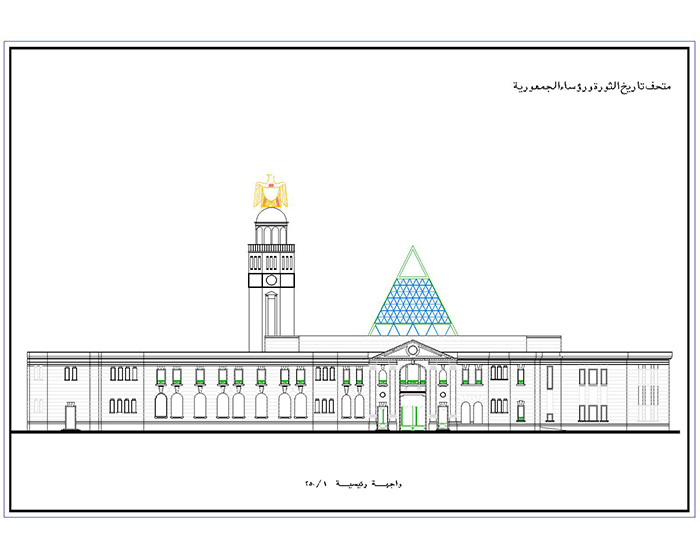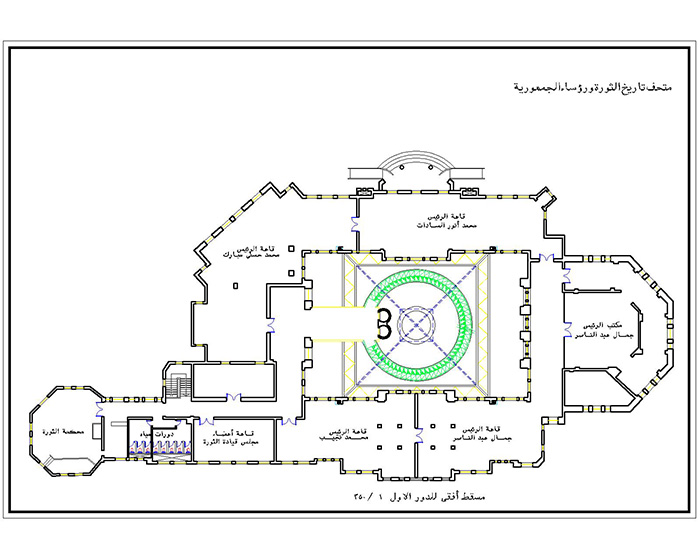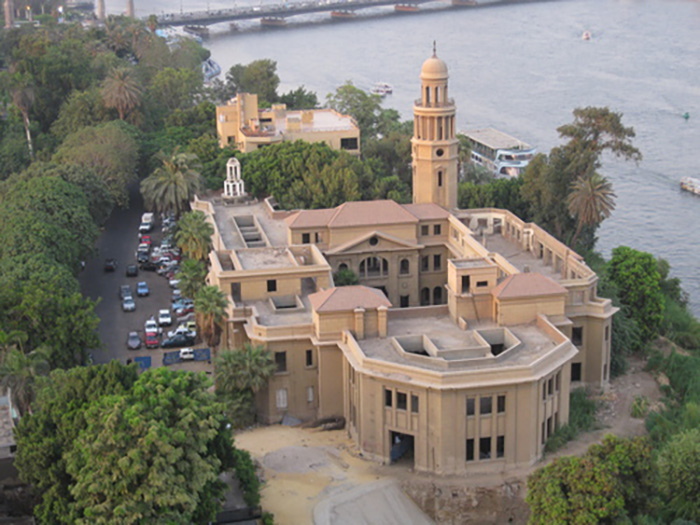
The Revolutionary Command Council Museum Competition

The Revolutionary Command Council Museum Competition
The building consists of three floors in the shape of a square, comprising 40 rooms on an area of 3,200 square meters, Construction under the auspices of King Farouk as a residential building in 1949, in the ancient Greek architectural style,
surrounded by gardens, in the middle of which is a large patio.
In the beginning, it was used as a marina for ships and yachts,
Former President Hosni issued Decree in 1996, transferring the affiliation of the headquarters of the Revolution Command Council to the Ministry of Culture,. In the same year, Farouk Hosni, the former Minister of Culture decided to prepare it as a museum for the leaders of the revolution, and a calendar followed to collect and receive all holdings belonging to the leaders of the revolution and present in a number of the Presidency of the Republic, until the museum’s holdings reached 11886 pieces, from the Presidency of the Republic,
A preliminary narrative for the museum was put together , focusing on Naguib, Nasser and Sadat, and highlighting important decisions made by the RCC, such as the Land Reform Law and the cancellation of political parties.
THE CONCEPT
TTG proposed a scenario for the musem visitors starts a few hundred meters before reaching the museum, at the opposite bank of the Nile. Where the visitor sees the top of the pyramid protruding from the building as if it is a pyramid born from inside it, in a symbolic image that symbolizes that from this building the Egyptian civilization was born in the modern era - the glass top of the pyramid appears glowing with sunlight to reflect it strongly in the direction of the statue of the victorious eagle (symbol of the revolution and the state) link above The top of the palace tower looks proudly at the Nile. Thus, the visitor's feelings begin to crystallize about the philosophy of the revolution, with strong and explicit symbols: the pyramid - the glow of the sun - the victorious eagle.
Then the visitor begins the journey of crossing the Abu El-Ela bridge to reach the museum (this bridge is one of the old distinctive signs on the Nile, which has become old and difficult to use in order to withstand the high traffic intensities, as it impedes the extension of a bridge adjacent to it - so the suggestion here is to make Transferring the bridge, as it is dismantled and easily transported through the course of the Nile to this nearby location, so that the bridge is the means of approaching and reaching the museum, where the importance of the archaeological bridge is commensurate with the importance of the museum.
The episodes of struggle that preceded the revolution will be presented through statues, arts works sculpture murals on the bridge while the visitors passing through ,beginning with Ahmed Orabi and the Denshway incident, then the leader Saad Zaghloul, the 19th Revolution, leaders Mustafa Kamel and Muhammad Farid, and ending with Mustafa Al-Nahhas, and finally the visitor would have approached the palace to find the bank of the Nile at the bottom of the palace covered with a distinctive sculptural mural that summarizes the period that preceded the revolution and the struggles that permeated it . The entrance of the museum will lead directly to the central courtyard of the palace , which is covered with a glass pyramid, The main access tool t of the museum is a large ramp to facilitate the movement of visitors of all ages. The ramp reaches the first floor, where the starting point of the visit is the officers’ hall of the Revolutionary Command Council, and the sound and light show of the Revolutionary Court. Then it continues its journey in chronological order, where it is Muhammad Naguib Hall, then Gamal Abdel Nasser Hall, then Anwar Sadat Hall, and finally Hosni Mubarak Hall. These halls are divided into three partitions. The parts of each part represent a stage. The first stage tells the leader’s childhood and boyhood, then the second stage tells the leader’s history from the graduation period from the military college until before he assumed leadership. Finally, the third stage is the largest area, as it contains the personal belongings of the leaders and three-dimensional models of the most important projects.
Screening of a cinematic documentary film with a continuous screening system that tells the story of the leader’s life and includes the most important and famous speeches. This film will be the sound background in the hall in its three parts. The foreign visitor will listen to simultaneous translation using special headphones that he wears when entering the museum, taking into account that the film’s elements contribute to emphasizing each period, especially music The soundtrack - in the sense that the soundtrack of Gamal Abdel Nasser differs from that of Sadat and that of Hosni Mubarak. The stage of Gamal Abdel Nasser is the stage of Arab nationalism, so it is suggested that the soundtrack be placed influenced by the songs of that period, the most famous of which is the greatest national anthem. As for Sadat, we suggest the help of the artist Omar Khairat in setting the background The musical, where he previously put the soundtrack for the 6th of October panorama, and it really represents the most important events that must be emphasized. As for Hosni Mubarak, Egypt has returned to be proud of its pharaonic capacity, so it is suggested to seek the help of the artist Modi Al-Imam, as he is distinguished by using the harp in his music, and it gives an impression of the pharaonic atmosphere
As for Muhammad Naguib, the music of Sayed Darwish for his immortal patriotic songs would be very appropriate.
After completing the visit to the Hosni Mubarak hall, the visitor finds himself in front of the ramp, where he takes him to the second floor, where the cafeteria overlooks the Nile directly, as well as the gift shop. After that, he finds a panoramic elevator in front of him that descends or returns to the ramp to the ground floor, where the rest of the project elements are located, including libraries and various showrooms. .


















